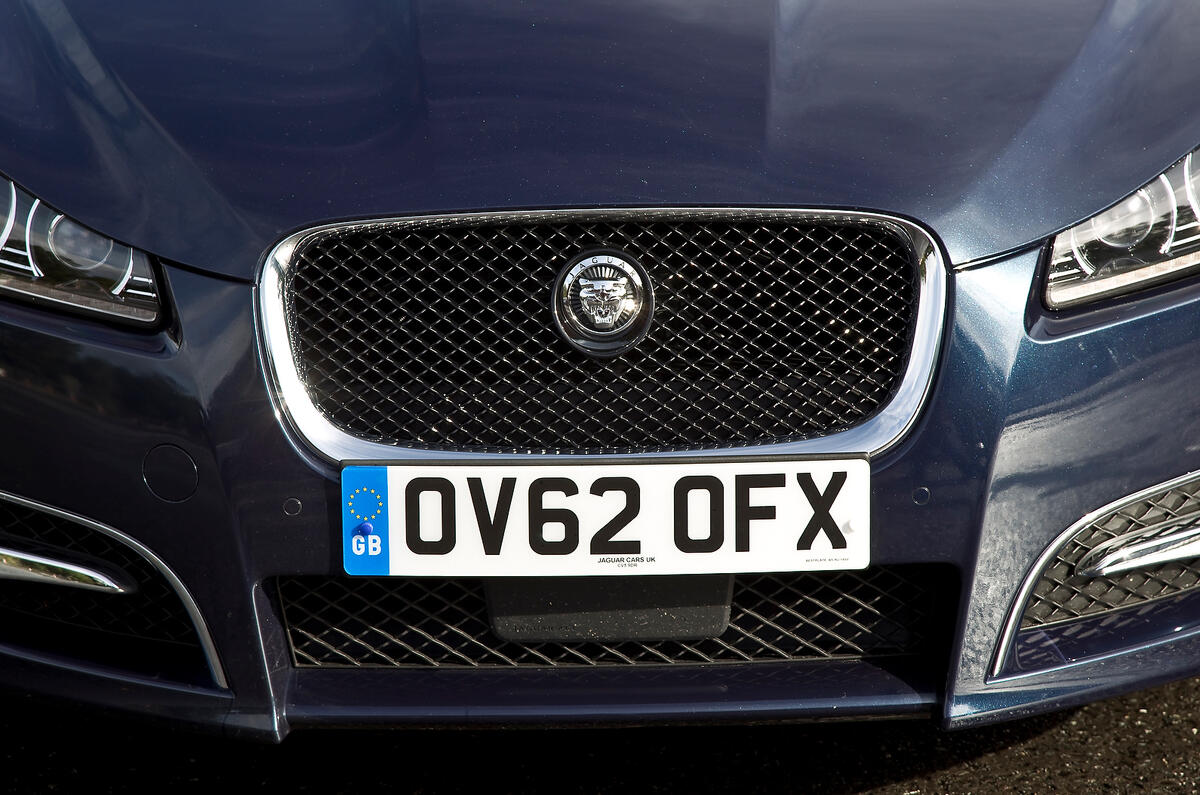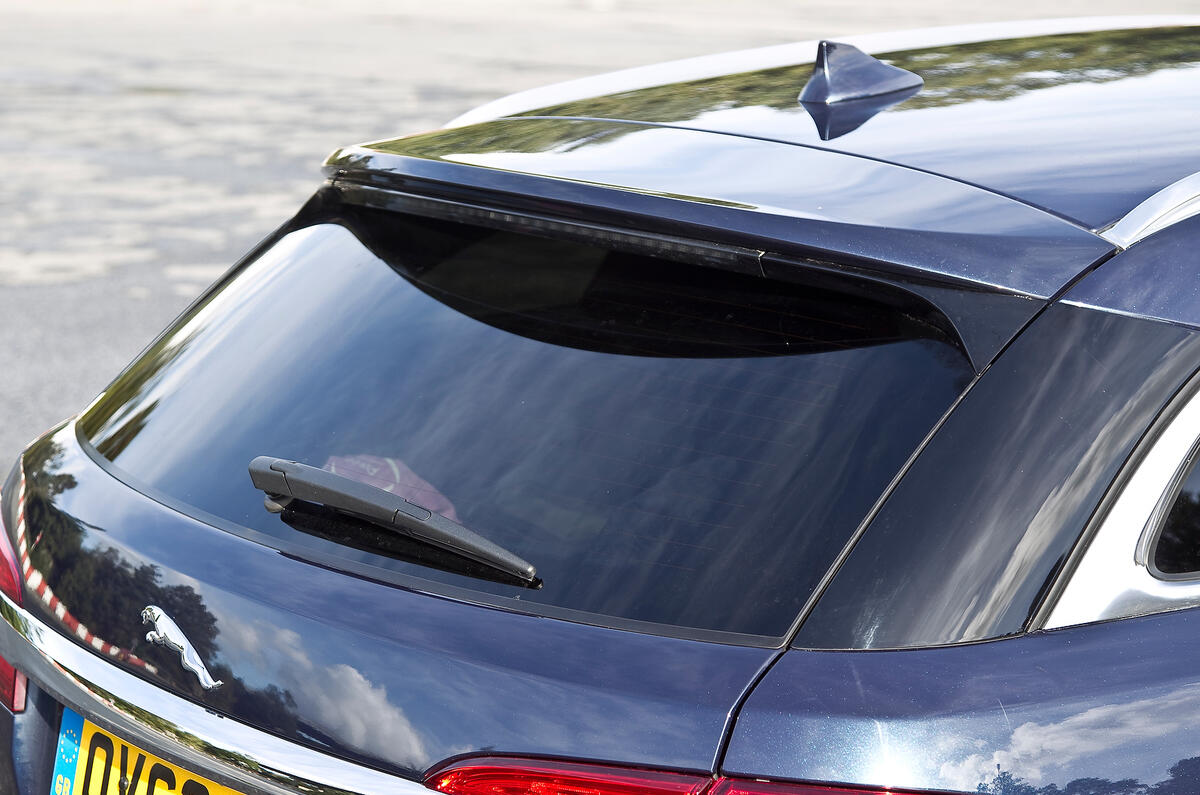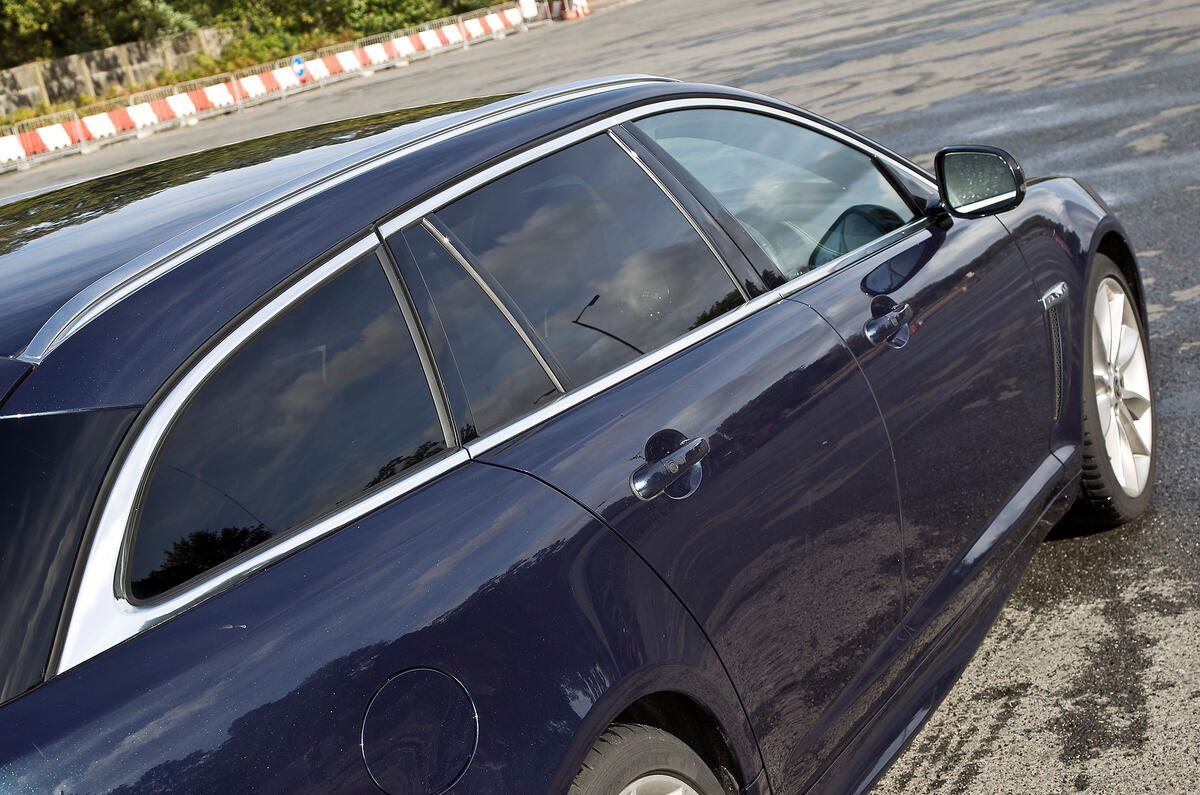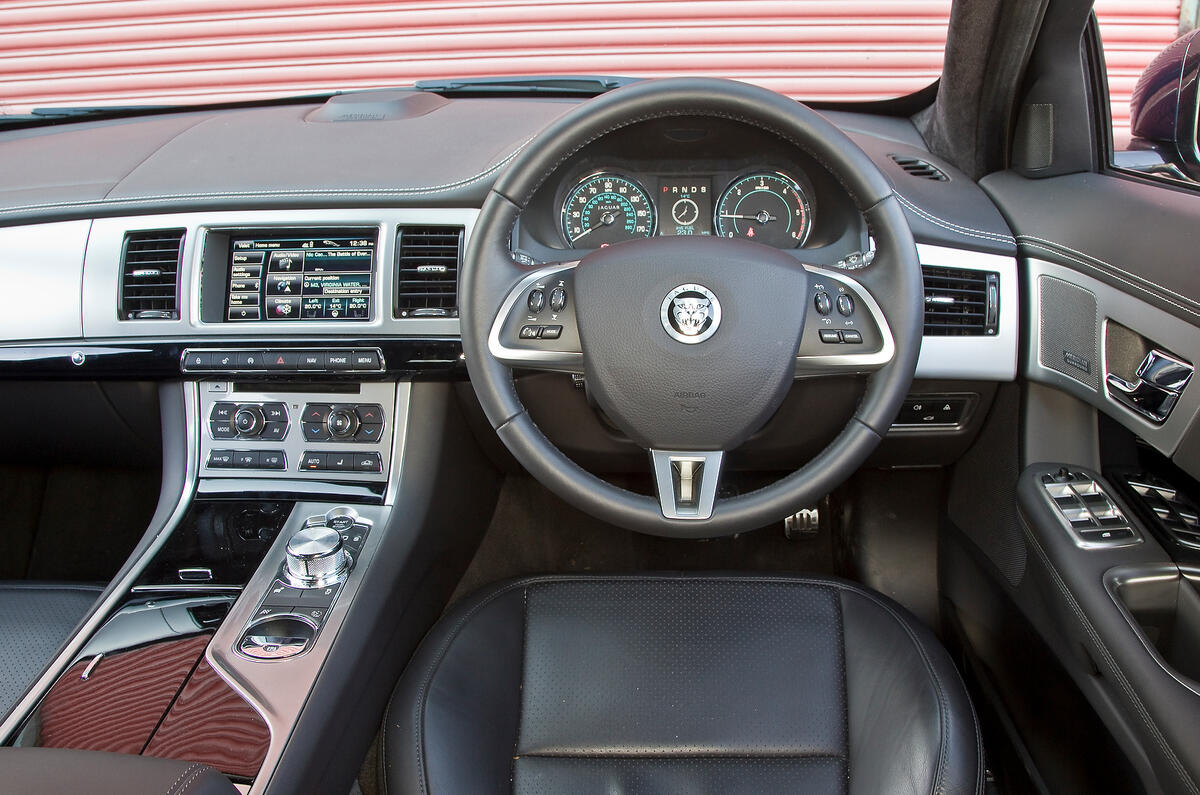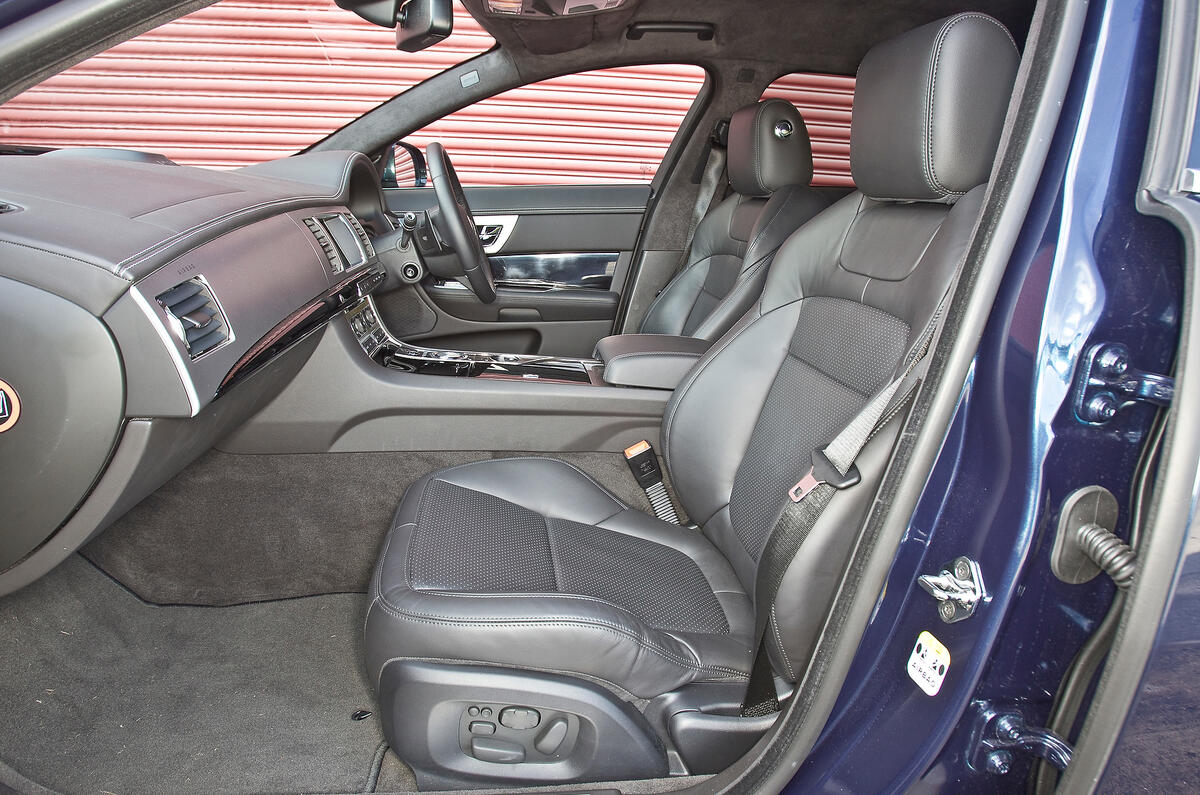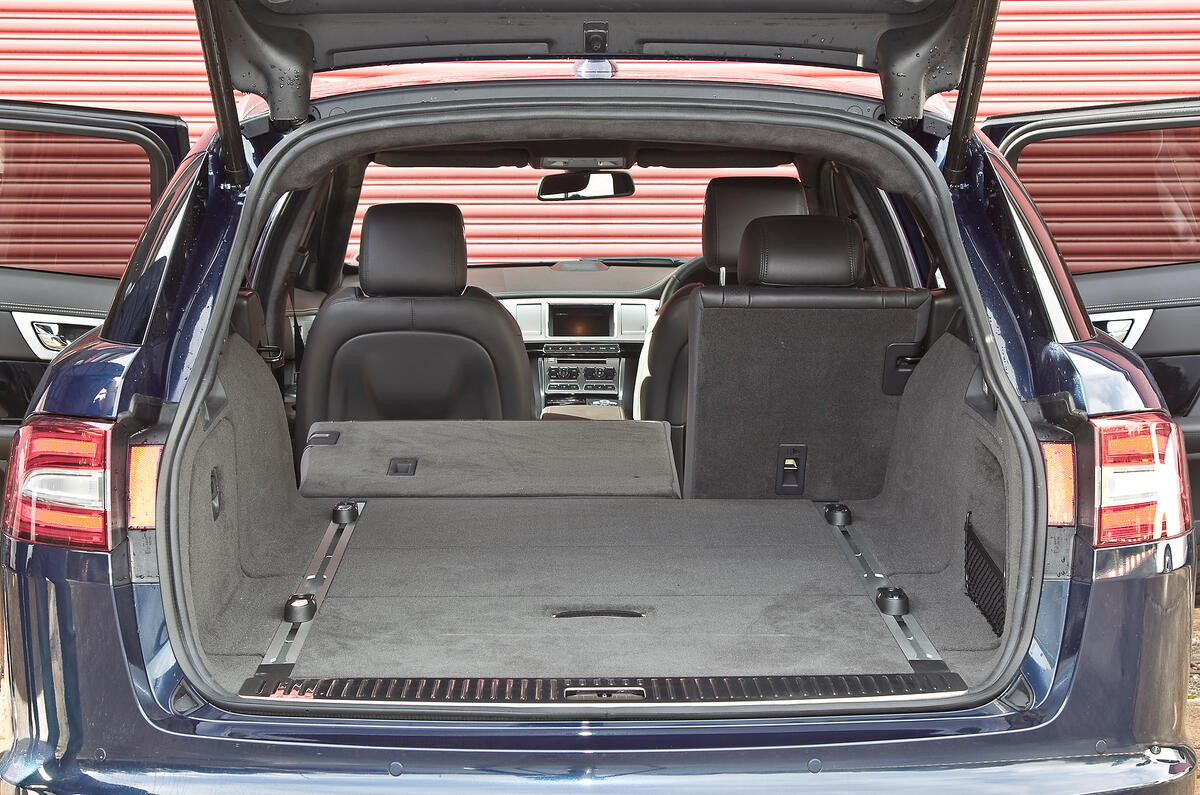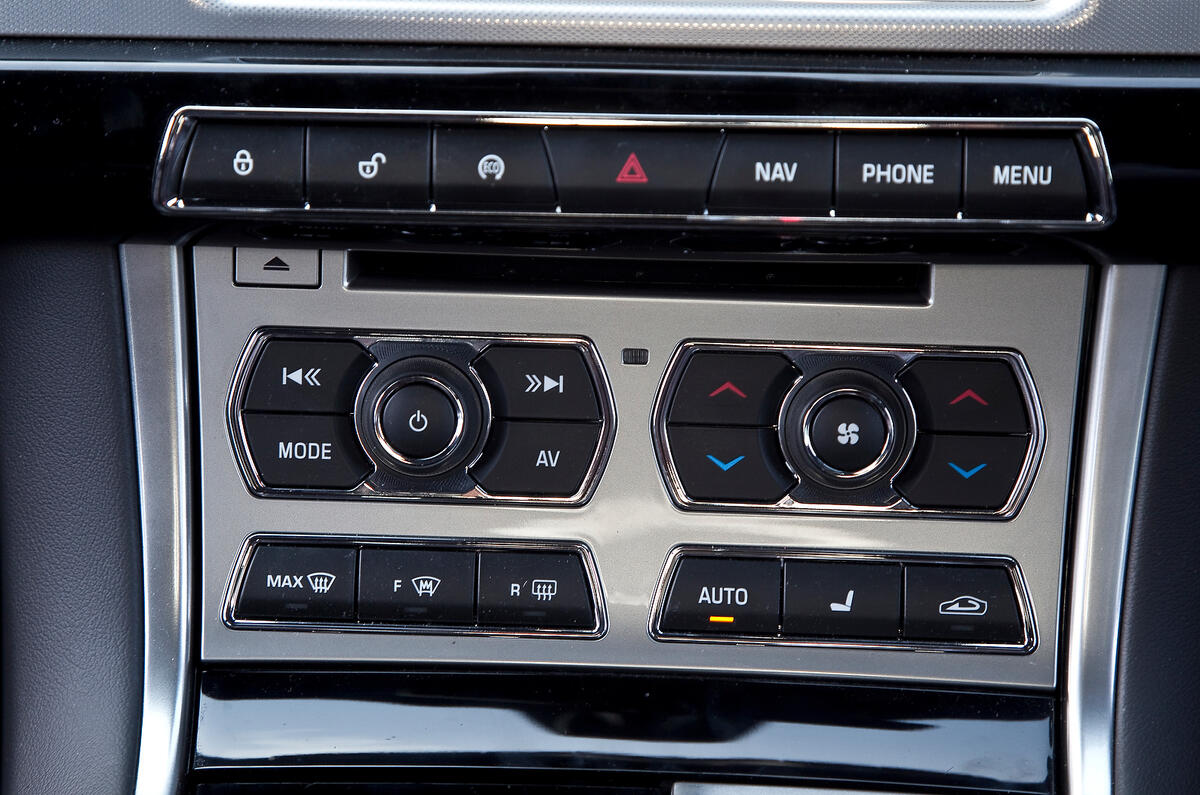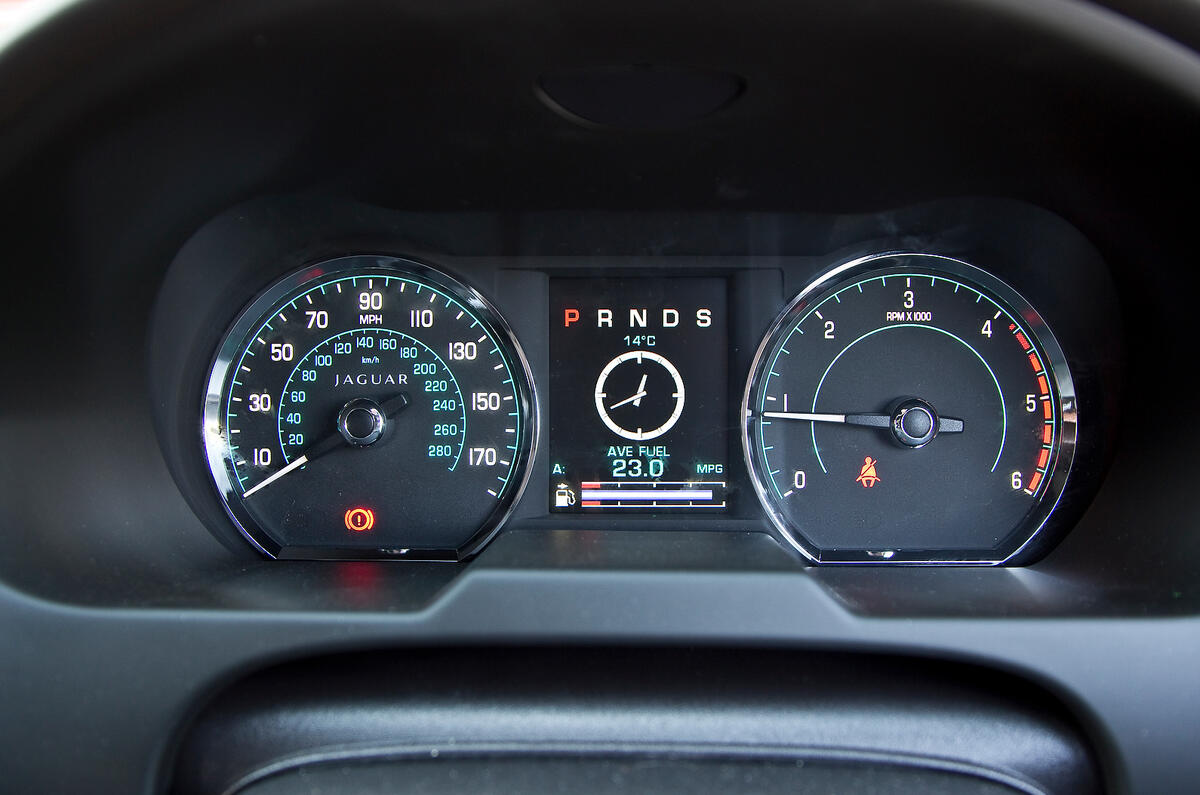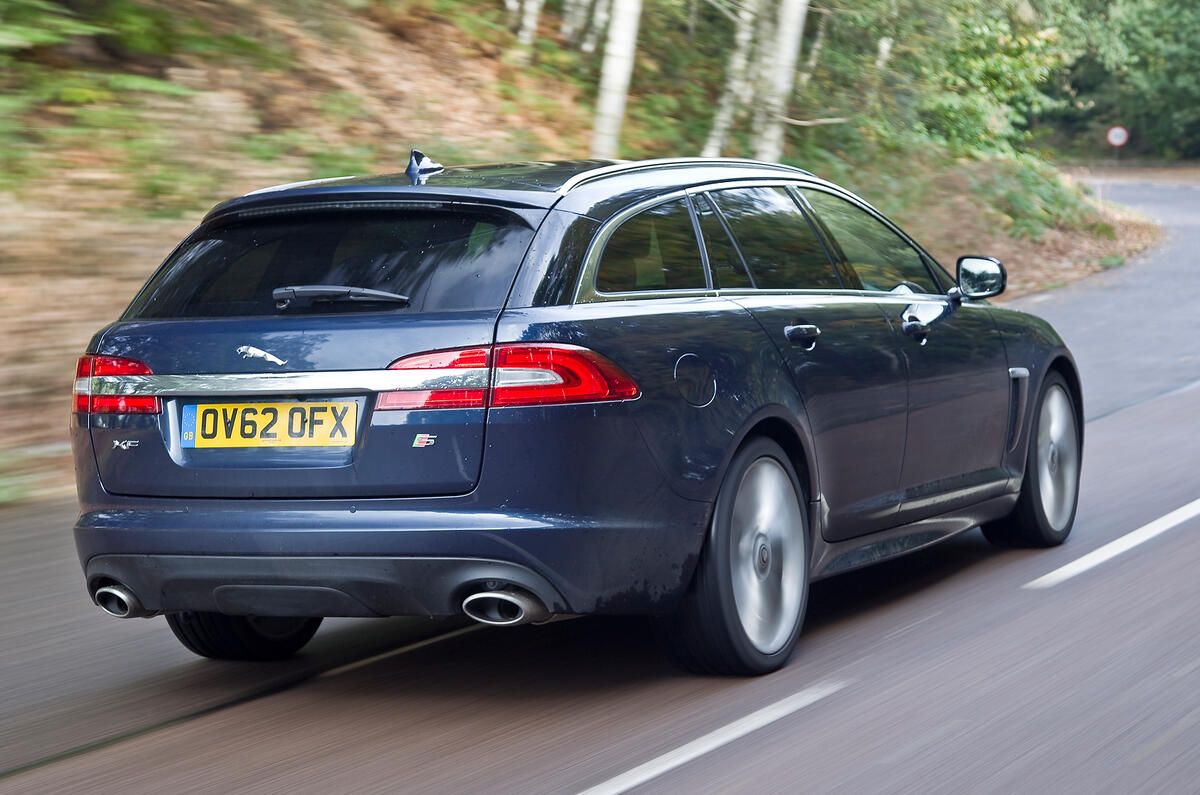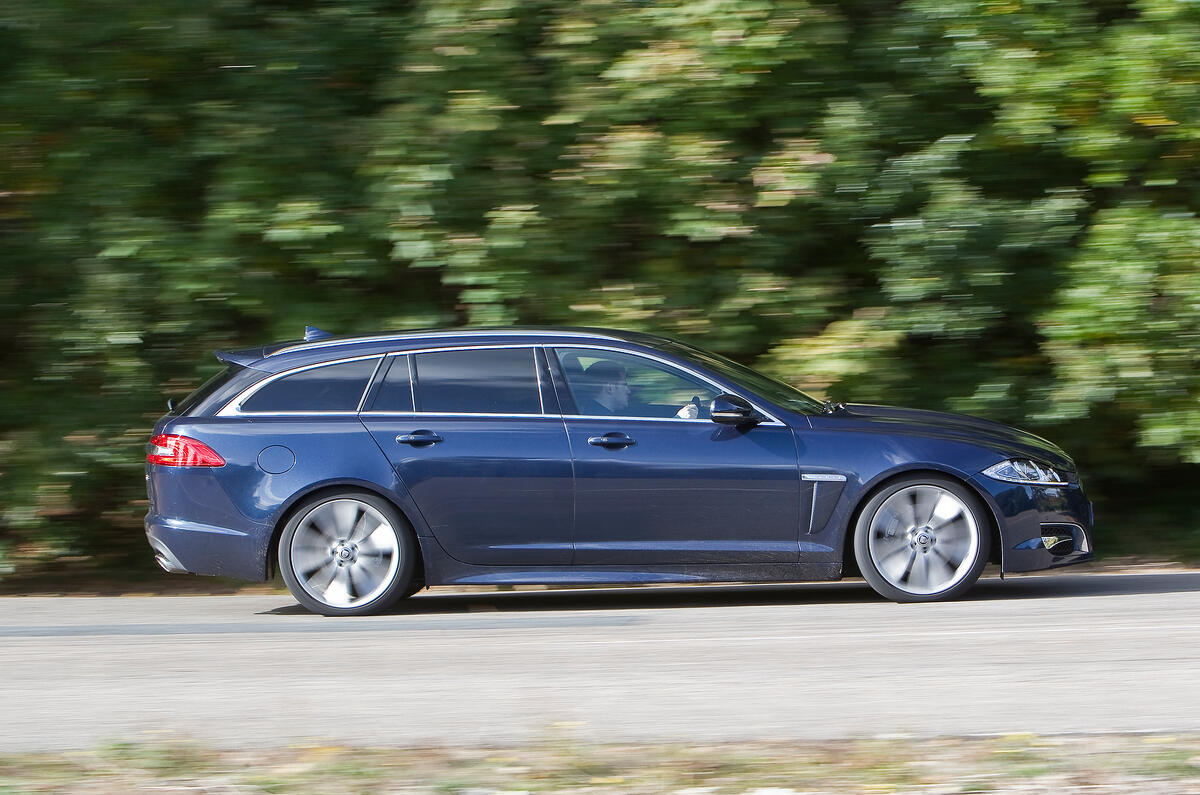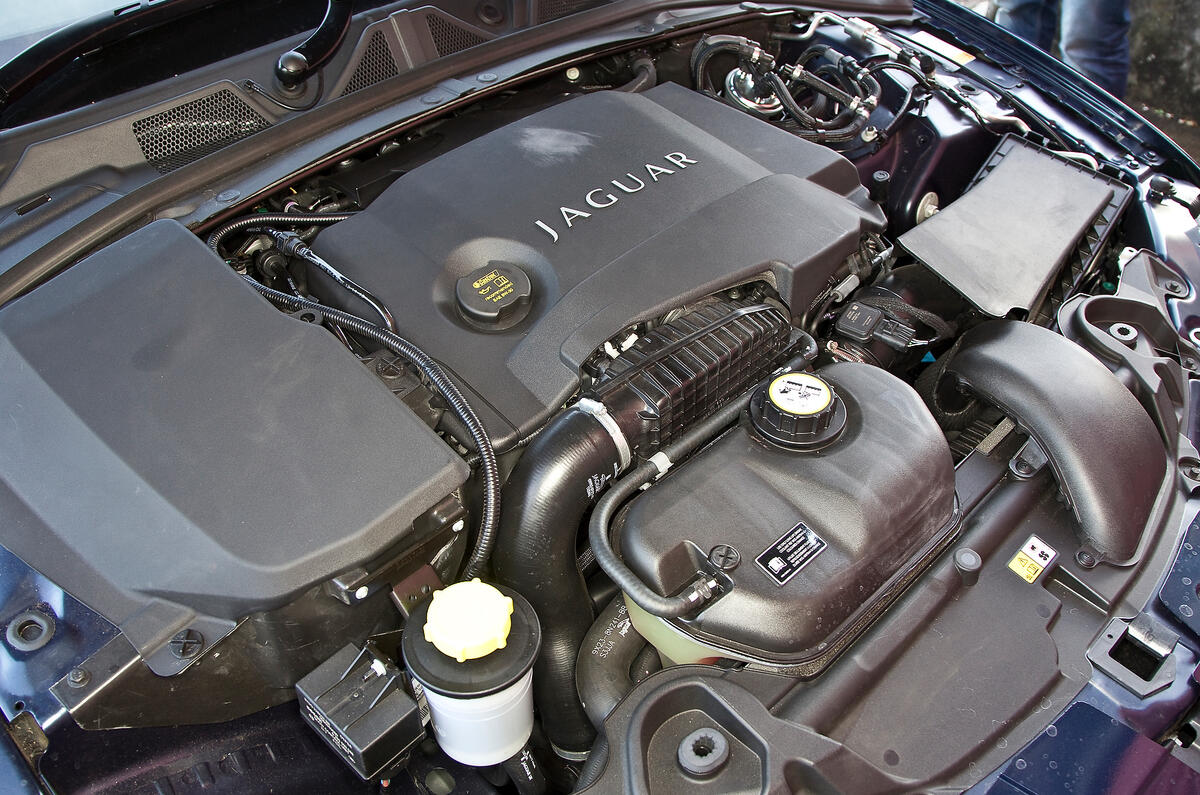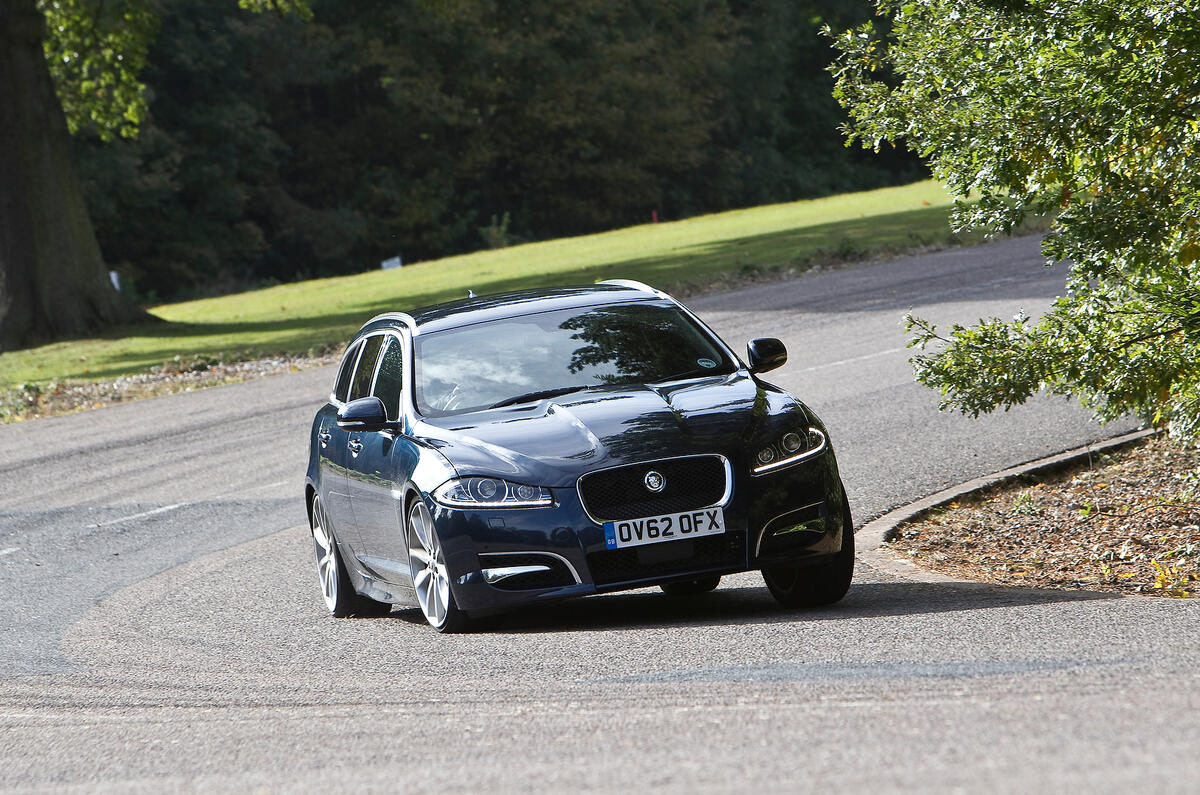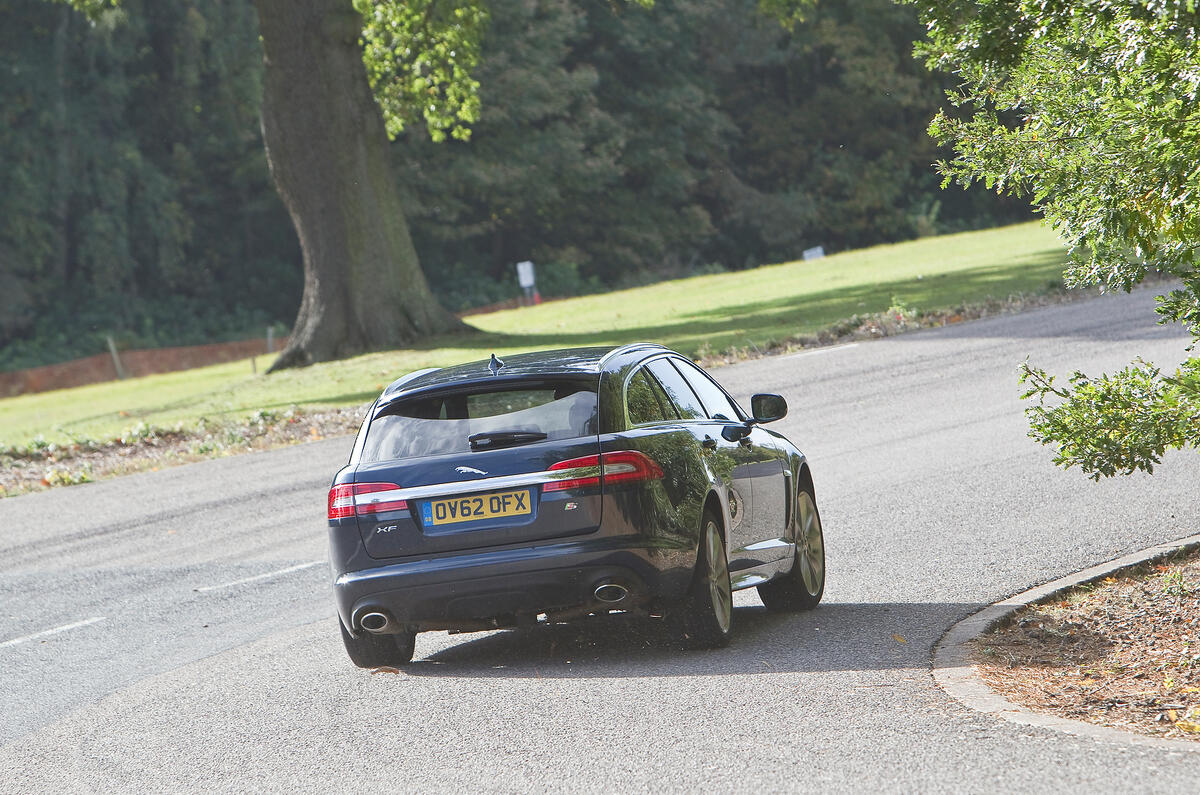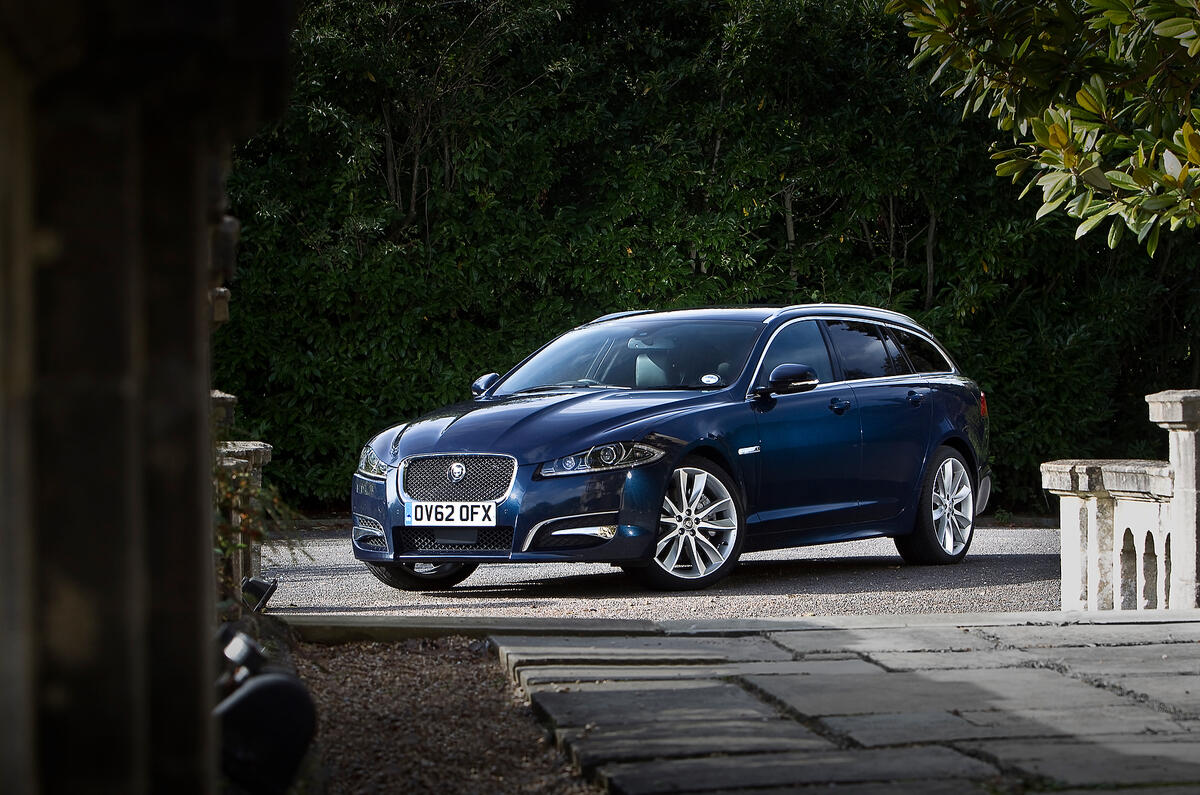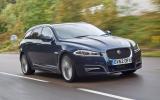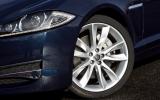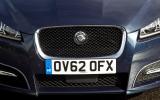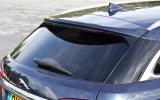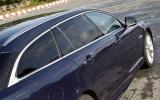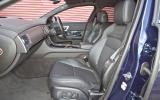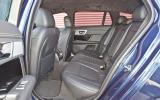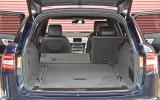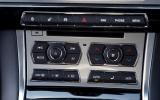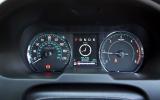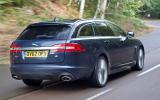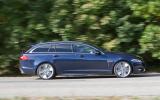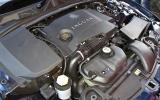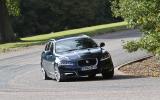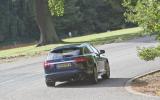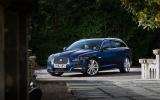It seems churlish to complain about a two-tonne estate car that can crack 60mph in a shade over seven seconds. Still, anyone paying £50,000 for an express load lugger should expect it to be pacey – at least as fast as its maker says it is, and ideally as fast as anything else for the price.
According to our timing gear, the hottest 3.0 diesel XF Sportbrake is neither of those. It took a second longer than Jag’s 6.1sec claim to sprint to 60mph and 18.4sec to break 100mph, the latter being less than a second quicker than the 228bhp Mercedes-Benz E350 CDI estate we tested in 2010. Bet your bottom dollar that a BMW 535d Touring would do it in little more than 15 seconds.
The case for the higher powered 3.0-litre model gets worse when compared to the performance of the higher powered 2.2. The lowest 160bhp version may take an agonizing 10.9 seconds to reach 62mph, but the 197bhp model will cover the benchmark sprint in 8.2 seconds, just over a second off the 3.0-litre S. With the prospect of more than 55mpg from the higher-powered 2.2-litre unit, that sort of performance is more than acceptable, especially if you aren't looking for searing pace. The 237bhp 3.0 diesel records a claimed 0-60mph time of 6.8sec, which is more than respectable, but the mpg is actually worse than that of the higher powered unit.
That aside, there is little wrong with the responsive, soft-edged briskness that the higher powered 3.0-litre model XF can conjure up, although we’d prefer a slightly more linear power delivery. While the twin turbos don’t suffer much lag, they give up most of their response before you’ve finished with the middle third of the accelerator travel. A slick-shifting auto ’box and torque-swollen mid-range combine to make winding on 20mph or 30mph quite effortless, regardless of your prevailing speed. At about eight-and-a-half-tenths of the fastest socially acceptable A-road and B-road lick, the car is at its best. Be too aggressive with the throttle, though, and that eight-speed transmission can drop one too many cogs in its pursuit of optimum thrust, giving you the impression that the car is better suited to fast but relaxed progress than being hurried to extremes.
The higher-powered 2.2-litre unit delivers substantially less in terms of outright pace, but remains a strong performer. It doesn't feel exceptionally quick from a standing start, but its actual point-to-point pace is decent, and more than adequate for the majority of journeys. It also sits especially well with the eight-speed ZF gearbox, which ensures the engine is rarely stressed and, even at a motorway cruise, does nothing to damage refinement.
Indeed, whichever engine you choose, like all good tourers should, the XF rewards its occupants with the kind of mechanical refinement to soothe away hour after hour of long distance. The only bump in that journey is likely to be the fuel stops; the higher powered 3.0-litre unit in particular is unlikely to be able to cover 500 miles in real-world driving conditions before requiring a refill.





